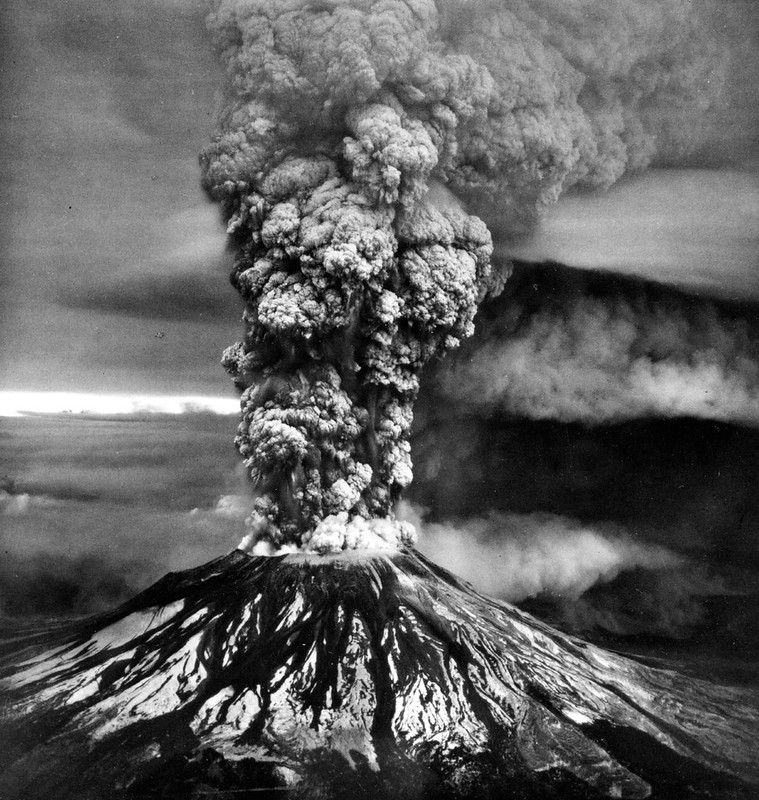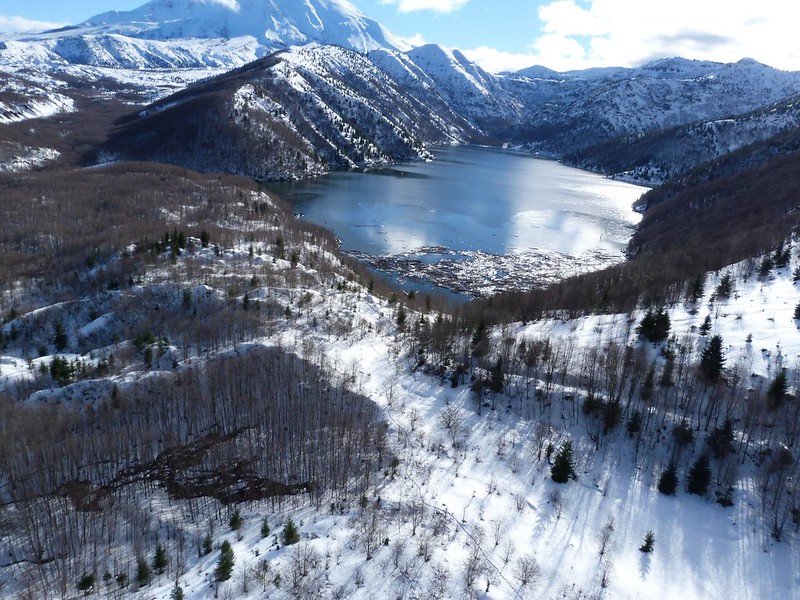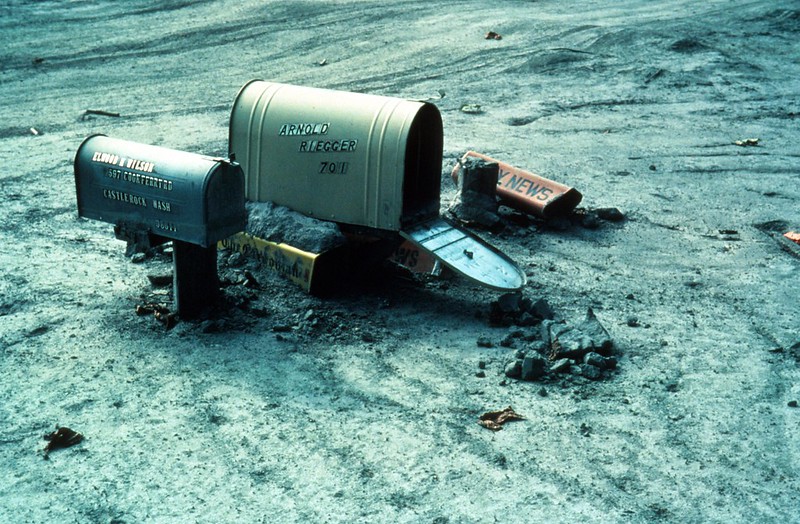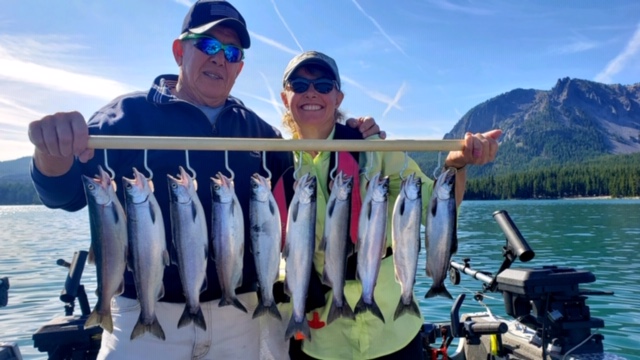
Fire And Fishing: Volcanos Like St. Helens Have Formed Many Northwest Waters
It was 40 years ago today that I was sure the Germans had invaded.
I heard three muffled blasts that Sunday morning and ran outside with my BB gun to take up a position to plink at the panzers as they blasted their way up Trout Farm Road, outside Sultan, Washington.

They never came and in fact it was the eruption of Mt. St. Helens 100 miles to the south-southwest that I had heard.

The combination of massive debris avalanche – reported to be the largest in in recorded history – lateral blast and ash plume that went 60,000 feet into the air killed 57 people and an estimated 7,000 deer, elk and bear and some 12 million hatchery Chinook and coho fingerlings.
It also created brand-new landscapes for fish and wildlife, plugging the outlets of Coldwater and Castle Creeks and creating new lakes that have become quality trout fisheries.

IT’S BEEN THIS WAY for eons. Ocean plates colliding with and sinking under the North American continent fuel our rumbling, grumbling giants.
Mountain building and erosion up and down the Cascades has created many lakes that Northwest sportsmen enjoy these days – and they’re not all alpine trout waters.
For instance, about 2,500 years ago, Mt. St. Helens sent a massive lahar down the South Fork of the Toutle River, damming up a low valley near the town of Toutle and creating Silver Lake, home to bass, crappie and perch fishing.
Then there was the Electron Mudflow which came off the southwest face of Mt. Rainier around 550 years ago and advanced into a side valley, drowning a forest and creating Lake Kapowsin, known for its bass and panfishing.
Duck hunters can also give a tip of their camo hats to our seemingly idyllic snow-capped peaks.


“A lot of the areas like the Nisqually and Skagit Deltas have grown from sediment swept down from volcanoes by lahar,” Willie Scott, a geologist at the Cascades Volcano Observatory in Vancouver, told me. “The Sandy River delta was built from lahars from Mt. Hood.”

WHILE GLACIERS carved many of the lakes in Washington’s Cascades, lava flows are responsible for many of those on the Oregon side of the range, including a who’s who list of some of today’s better trout waters – Lake of the Woods, Davis, Hosmer, Lava, Sparks and Waldo Lakes.
(Washington’s Merrill Lake, on the upper Kalama, was similarly created.)
Then there are the crater lakes – and not just That One. Paulina and East Lakes sitting in the Newberry Caldera are known for their brown trout and kokanee fishing.

Not all geologic processes creating today’s fishing and hunting landscape have been so fiery – think the repeated Missoula Floods across North Idaho, Eastern Washington and the Columbia Gorge – but on this day every year I always think back about how some of our playgrounds were formed.


